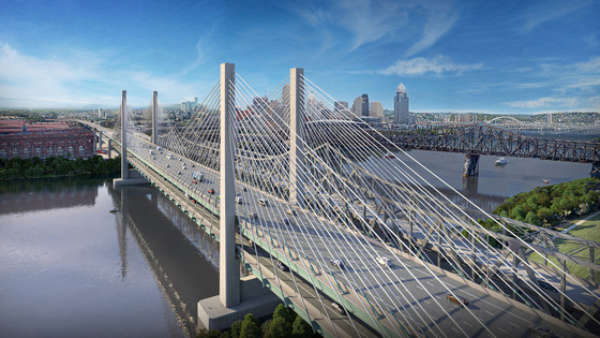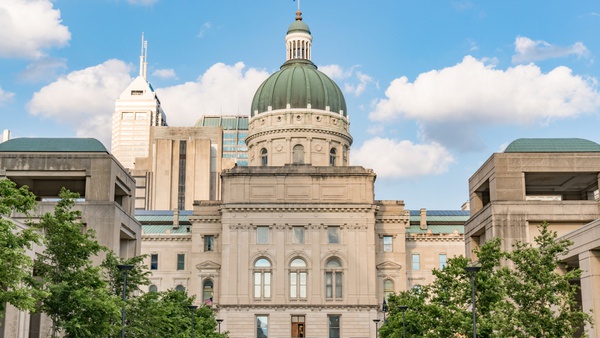The governors of Kentucky and Ohio made a joint announcement regarding the design.

Rendering provided.
CINCINNATI - Kentucky Governor Andy Beshear and Ohio Governor Mike DeWine today unveiled a state-of-the-art design type for the new companion bridge that’s part of the 8-mile-long Brent Spence Bridge Corridor Project in Cincinnati and Northern Kentucky.
The decision marks a major milestone on one of the nation’s most significant transportation investments that improves safety and strengthens economic development opportunities.
“The new companion bridge will be a game-changer for commuting families, and it’ll revolutionize a crucial economic corridor,” Gov. Beshear said. “This is a project that has been dreamed of for years and that many said would never happen. But we are getting it done by working together – and we’re doing it without tolls.”
The selected design is a cable-stayed independent deck bridge. Compared to the other options considered, this design is lower in cost and easier to build.
Instead of using a traditional steel truss to support the bi-level bridge’s lower deck, both decks will be supported by a cabling system similar to those used in other modern bridges, such as the Abraham Lincoln Bridge in Louisville and Veterans Glass City Skyway in Toledo. Unlike other double-deck bridges, no steel work will connect the two decks.
“As we went through the designs, we wanted this bridge to be cost effective, functional and safe, but we also wanted it to look good,” said Gov. DeWine. “This bridge will become an iconic part of the Cincinnati skyline and create a landmark gateway that honors our states’ excellence in engineering, transforms the daily commute and keeps commerce moving.”
On the current Brent Spence Bridge, drivers heading south into Kentucky use the upper deck. On the new bridge, northbound drivers will use the top level, giving them unobstructed views of the Cincinnati skyline and the bridge’s unique design.
Beyond the new companion bridge, the project includes improvements to the existing Brent Spence Bridge to carry local traffic, redesigned ramp configurations throughout the corridor, new pedestrian and bike paths connecting communities to transit and employment centers and aesthetic improvements designed to create walkable, urban environment.
With the bridge type now selected, the project team will continue refining project and design details. To learn more and sign up for monthly updates, visit www.BrentSpenceBridgeCorridor.com.

 BCSC Reaches Tentative Agreement with Batesville Educators Association
BCSC Reaches Tentative Agreement with Batesville Educators Association
 Houchin Releases Statement on Efforts to Release Epstein Files and Protect Victims
Houchin Releases Statement on Efforts to Release Epstein Files and Protect Victims
 RCCF Accepting Grant Applications to Promote a Greener Tomorrow
RCCF Accepting Grant Applications to Promote a Greener Tomorrow
 Farm Bureau: Indiana Thanksgiving Costs Virtually Unchanged from Last Year
Farm Bureau: Indiana Thanksgiving Costs Virtually Unchanged from Last Year
 Maxwell: General Assembly Kicks Off 2026 Session
Maxwell: General Assembly Kicks Off 2026 Session
 Sunman-Dearborn Schools Announces New Two-Year Collective Bargaining Agreement
Sunman-Dearborn Schools Announces New Two-Year Collective Bargaining Agreement













